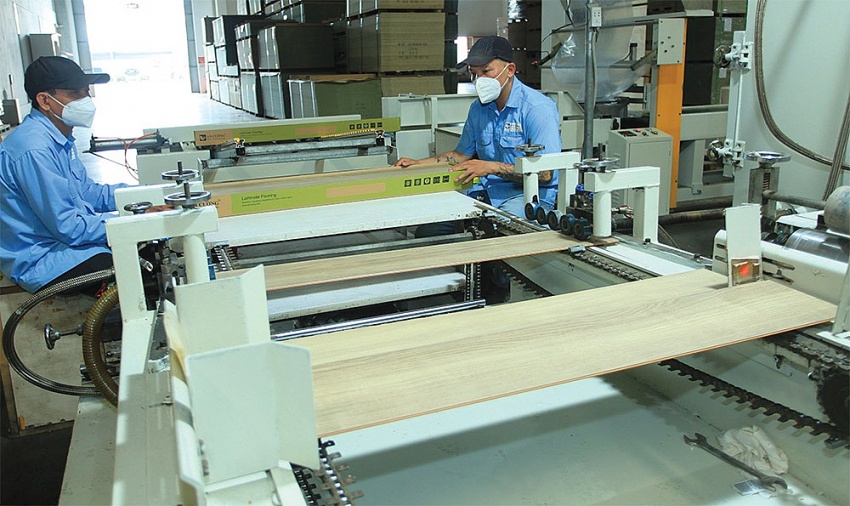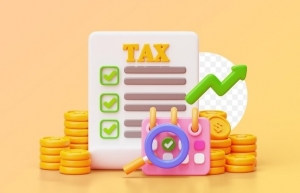Lawmakers study VAT implications
The National Assembly Committee for Finance and Budget last week proposed that the draft amendments to the Law on VAT should increase to boost the state revenues, which remain limited.
 |
| At present, some businesses are struggling to stay afloat even while enjoying a VAT reduction, photo Le Toan |
“Vietnam’s tax system reform strategy towards 2030 has determined a direction towards considering an increase in VAT rates according to roadmaps. This is consistent with the general trend of countries in the region, the wider world, and the current state budget needs of Vietnam,” the committee said.
“It is recommended that the government soon assess the impact of a number of schemes to increase the VAT rate, so that we can consider the possibility of stipulating a roadmap on raising VAT appropriately, after the economy has recovered, possibly by the end of the period of 2026-2030.”
Since February 2022, the common VAT rate in Vietnam has been temporarily set at 8 per cent by the National Assembly (NA) in a bid to support struggling enterprises (see below). This rate will likely return to 10 per cent in early 2025.
According to the committee, Vietnam’s common VAT rate needs to be on a par with that in other nations. At present, the common VAT rate of 10 per cent in Vietnam remains lower than Asia (12 per cent), Latin America (14 per cent), Africa (16 per cent), and the EU (22 per cent). The current global average rate is 15 per cent.
“This comparison shows that Vietnam has room to increase VAT in the future, especially as the country needs to expand its revenue bases,” said the committee’s Chairman Le Quang Manh.
Indonesia has raised VAT from 10 to 11 per cent in April 2022, and to 12 per cent now. Singapore has also followed suit under a two-year roadmap, from 7 to 8 per cent in January 2023 and 9 per cent in January 2024. China applies a rate of 17 per cent, while it is 10.5 per cent in South Korea.
According to the World Bank, of 112 economies, 88 economies impose rates from 12-25 per cent, including 56 economies inflicting rates from 17 to 25 per cent, while the rest apply an average of more than 10 per cent. The highest standard VAT rate in the world is 27 per cent in Hungary.
Meanwhile, according to International Monetary Fund statistics on tax rates of 164 countries and territories in 2020, there were 122 countries with common tax rates from 13 to 27 per cent (including 84 countries with tax rates from 17 to 27 per cent); 26 countries have common tax rates ranging from 10 to below 13 per cent; and 16 countries impose a common rate of below 10 per cent.
The government in April also submitted a tax report to the National Assembly Standing Committee, underscoring a direction for amendments and supplements of the common VAT rate of 10 per cent now, amid a decrease in budget revenues from exports and imports.
“To implement the Party’s policies and guidelines, in accordance with international VAT reform practices, it is necessary to be research and apply an appropriate common tax rate,” the report said.
The government said that nations worldwide were now in a trend of restructuring state budget revenues, in which they strengthen the role of VAT, and gradually reduced import taxes to fulfill their commitments in the international community, while also gradually reducing corporate income tax (CIT) to increase the attractiveness of their investment environment.
The number of nations applying VAT or goods and services taxes is on the rise, from about 140 countries in 2004 to 160 in 2014, to 195 in 2020.
Meanwhile, Vietnam’s budget revenues from imports and exports have decreased due to the implementation of tariff reduction commitments where the country has inked free trade agreements, along with reduced revenues from crude oil exports, and a reduction in the CIT tax rate from 32 to 20 per cent, aimed at increasing the competitiveness of the economy. This has had a significant impact on the revenue of the state budget.
However, the idea to raise the common VAT rate have raised eyebrows among some businesses, which claim they are facing massive difficulties and are in critical need of support.
“It is necessary to revise the law, but a direction on increasing the 10 per cent VAT rate to a higher level must be carefully considered,” said NA deputy Hoang Van Cuong representing Hanoi.
“At present, businesses are struggling to stay afloat and enjoying a VAT reduction of 2 per cent. Thus, if the tax is increased, unwanted impacts will be seen. I would say that as compared to the average level of the world, Vietnam’s common VAT rate is low, but it is not low compared to other developing nations.”
Vietnam’s neighbouring countries such as Cambodia and Laos are also applying a common VAT rate of 10 per cent, while the rate is 9 per cent in Singapore.
Vietnam now has significant room to perform tax reform in many other sectors. For example, since 2008 the Ministry of Finance has drafted a law on asset tax, but has failed to submit to the NA due to different ideas, while this law is expected to help regulate incomes of many different people and units, especially those with high-income and major assets.
Nguyen Duc Minh, sale director of a Duc Minh Production and Trade JSC in Hanoi, which specialises in making home appliances, said that hundreds of thousands of enterprises like his are bogged down in difficulties caused by a series of factors both at home and abroad, including taxes.
“Authorised agencies should focus on reviving business performance instead of thinking about any VAT increase, which will drive enterprises into bigger difficulties,” Minh said. “I don’t understand why such a VAT rate rise to a higher level is tabled and discussed now, when a 2 per cent VAT reduction has been in effect since early 2022.”
“Enterprises are expecting a continued reduction of VAT or lengthened delay of VAT payment, not expecting a hike. Our company’s revenue has decreased 5 per cent over the past three years, and we are struggling to exist and keep workers.”
 | State budget balance needed following VAT decision Businesses in Vietnam will continue to enjoy an 8 per cent VAT rate until the year’s end following an extension to the rate cut, which will cause a decrease in state budget revenues. |
What the stars mean:
★ Poor ★ ★ Promising ★★★ Good ★★★★ Very good ★★★★★ Exceptional
 Tag:
Tag:
Related Contents
Latest News
More News
- Main drivers for Vietnam’s digital economy future (December 03, 2025 | 11:35)
- Pivotal stage of growth paves way for rise in M&As (December 03, 2025 | 10:00)
- Positive projections for M&A interest from Thailand (December 03, 2025 | 09:40)
- Manifesting the first line of defence in cybersecurity (December 03, 2025 | 09:00)
- The transformational role AI can play in accounting arena (December 03, 2025 | 08:00)
- Unlocking 5G-AI potential in Singapore (December 03, 2025 | 08:00)
- Data-driven strategies vital for a fast-evolving nation (December 02, 2025 | 09:41)
- Policy to practice: how Vietnam can lead the region (November 26, 2025 | 16:03)
- Mobilising private capital at scale vital for climate battle (November 26, 2025 | 15:36)
- VILAF and Yoon & Yang launch Vietnam - Korea Practice Unit (November 26, 2025 | 15:16)






















 Mobile Version
Mobile Version